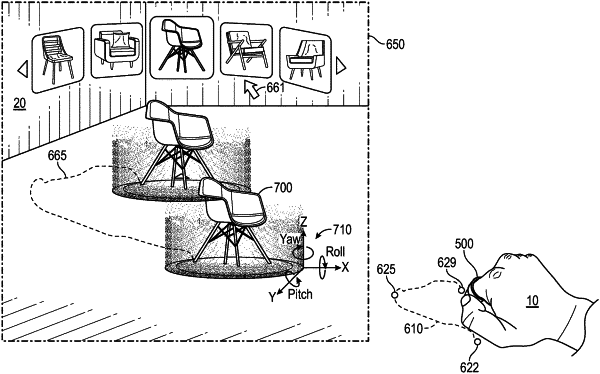| CPC G06F 3/0346 (2013.01) [G06F 3/0383 (2013.01); G06F 3/03547 (2013.01); G06F 3/04842 (2013.01); G09G 5/373 (2013.01); G06F 2203/0331 (2013.01); G09G 2340/045 (2013.01); G09G 2354/00 (2013.01)] | 12 Claims |

|
1. A virtual object manipulation system, comprising:
a handheld device comprising an inertial measurement unit and an input device;
a wearable device in communication with the handheld device, the wearable device comprising a processor, a memory, and a display;
a virtual object manipulation system program stored in the memory, wherein execution of the program by the processor configures the wearable device to perform functions, including functions to:
collect motion data from the inertial measurement unit;
define a course traveled by the handheld device in motion relative to a physical environment based on the collected motion data;
present on the display a virtual object in apparent motion along a path that is correlated with the defined course, wherein the virtual object is presented as an overlay relative to the physical environment;
identify a first size associated with the virtual object at a first location along the path;
detect a segment traversed by a finger along the input device;
calculate a magnification factor based on the detected segment;
present the virtual object at a subsequent location along the path and at a subsequent size based on the calculated magnification factor;
establish a touchpad coordinate system along the input device;
determine a length and a heading associated with the detected segment relative to the touchpad coordinate system, wherein the calculated magnification factor comprises a value based on the length and a sign based on the heading, and wherein the sign is a binary command selected from the group consisting of enlarge and reduce; and
present the virtual object at a subsequent size based on both the value and the sign.
|